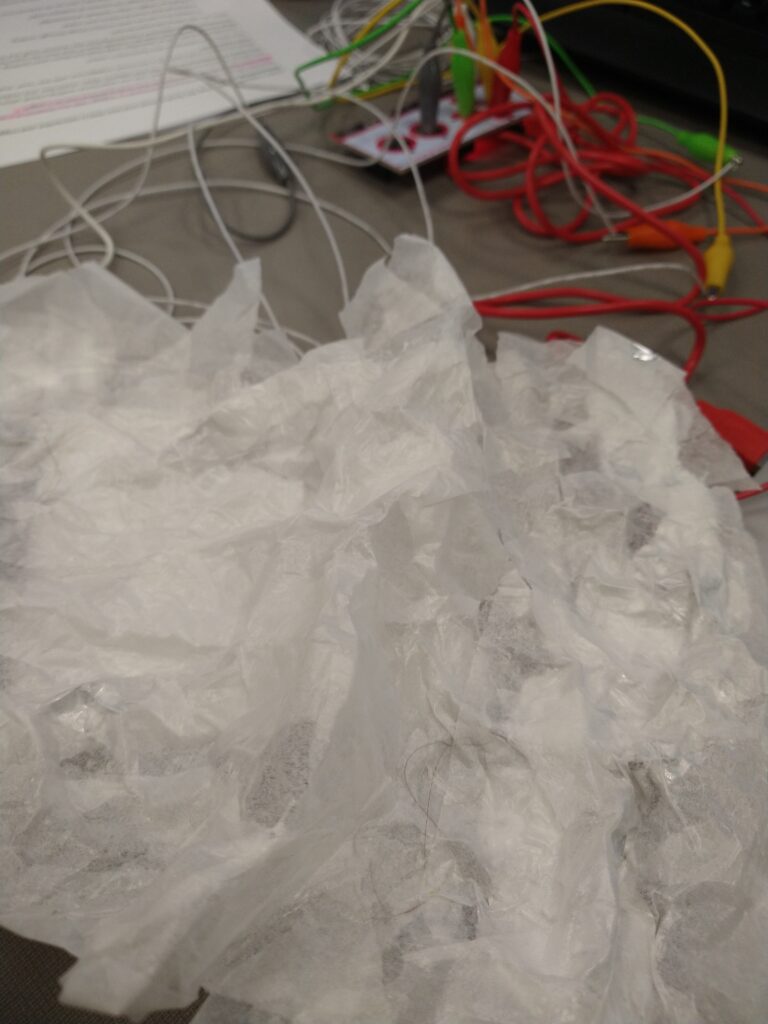Cycle 1: Book to map?
Posted: October 27, 2022 Filed under: Uncategorized Leave a comment »
Exploring the book form and text that is interactive and triggers audio. Questioning the form. Leaning towards a map . . .
How do I design an experience for someone to engage with my research in a way that breaks from the typical dissertation format and reading printed text on a page?
Should the experience be intimate? Like our experience reading a book where it is just us and the text? Or, relational to both the text (object), ideas, researcher and reader?
What structure could facilitate a non-linear engagement with the “text” that is different for each individual?
How does one experience the researcher’s voice?
I considered a book and an accordion-style book but these seem limiting. Is a map an option? What are the aesthetics? How do I include layers? How does the experience facilitate connections across distance? A distancing from the research itself and the researcher?
What do I like about the book format?
It relates to a way we come to know things through reading.
A physical book must be held in one’s hand.
A book has weight. Value. Symbolic of knowledge.
What do I like about a map? The process of reading a map?
It still has boundaries and borders, but can be entered from any point? Could include a hierarchy using scale and volume.
Can still be held, however can an interactive map be hand-held in a convenient way? (other than a digital map on our phone)? I like the idea of the reader following along with their finger to “trace” the lines of text which also triggers and “generates” the text.
What about a wayfinding format? Like those trailhead maps? Something tactile with “triggers” built in that combine reading with audio that fills in the spaces between maybe? As you follow from one point on a “path” to another, you make a connection and the audio plays and leads you there.
Tactile topographic maps. . .
If this and this, then this. . .
Point A (Idea A) draw line to point B (Idea B), space between how A relates to B (audio).
Trigger through touch. Running your finger over the text or connection line. Touching on two points to draw a connection between them.
Recording: Idea A, connection, Idea B Following the route. Using the text to draw the line between them and make the connection.
Still pre-determined by researcher, in control of what the ideas are, how they relate/connect. Reader is in control deciding what they are interested in making connections between. I could imagine what this might look like in a VR space potentially, but what about a physical space?
How can I present a standard, university-defined, formatted dissertation become more experiential?
What if the “text’s” were not just printed text and audio, but also video and photographic artifacts?
Aesthetics and materials, topography, cast tracing paper, Plexi, watercolor, cut-out text, wires visible? Connections and “behind-the-scenes” transparent, process exposed, making thinking visible, translations, sound and video/photo projection on the “map”? Is there a backtrack? Could there be subtle changes to the backtrack that are affected by the “routing” on the map?
Is it on a wall, positioned on an angle much like a podium at a height about waist-high?
Intermedia map that involves human touch, listening, hearing, and viewing, prompts one to speak?
Is a dimensional, topographic map a good solution? The lines between could be graphite or could be the actual wire that is couched down with embroidery floss. The wires could be “embedded” into the layers of the tracing paper casting so they could be hinted at, and visible, but also underneath the surface. How do you ground the viewer in this case? What if they had to hold a “fake” pen/pencil that connected to the ground and use that to trace? I prefer the idea of using their finger directly to trace though. Maybe they are asked to touch a “key” of some sort as they are also then touching a point and following it with their finger.
How could each point be wired up with a way for a finger to complete the whole circuit?
Some feedback: My next step is to find a simple story to “map” and test out form, does the map form work? physical hyperlinks to audio, video and image files. Connections to braille, reading in different ways, audio books, how we experience making connections between things, our own, personal experiences, choose your own adventure.
